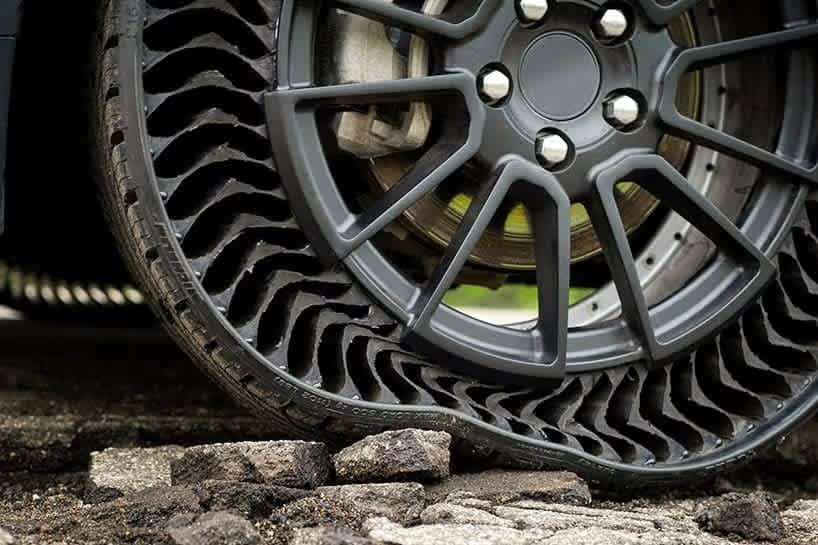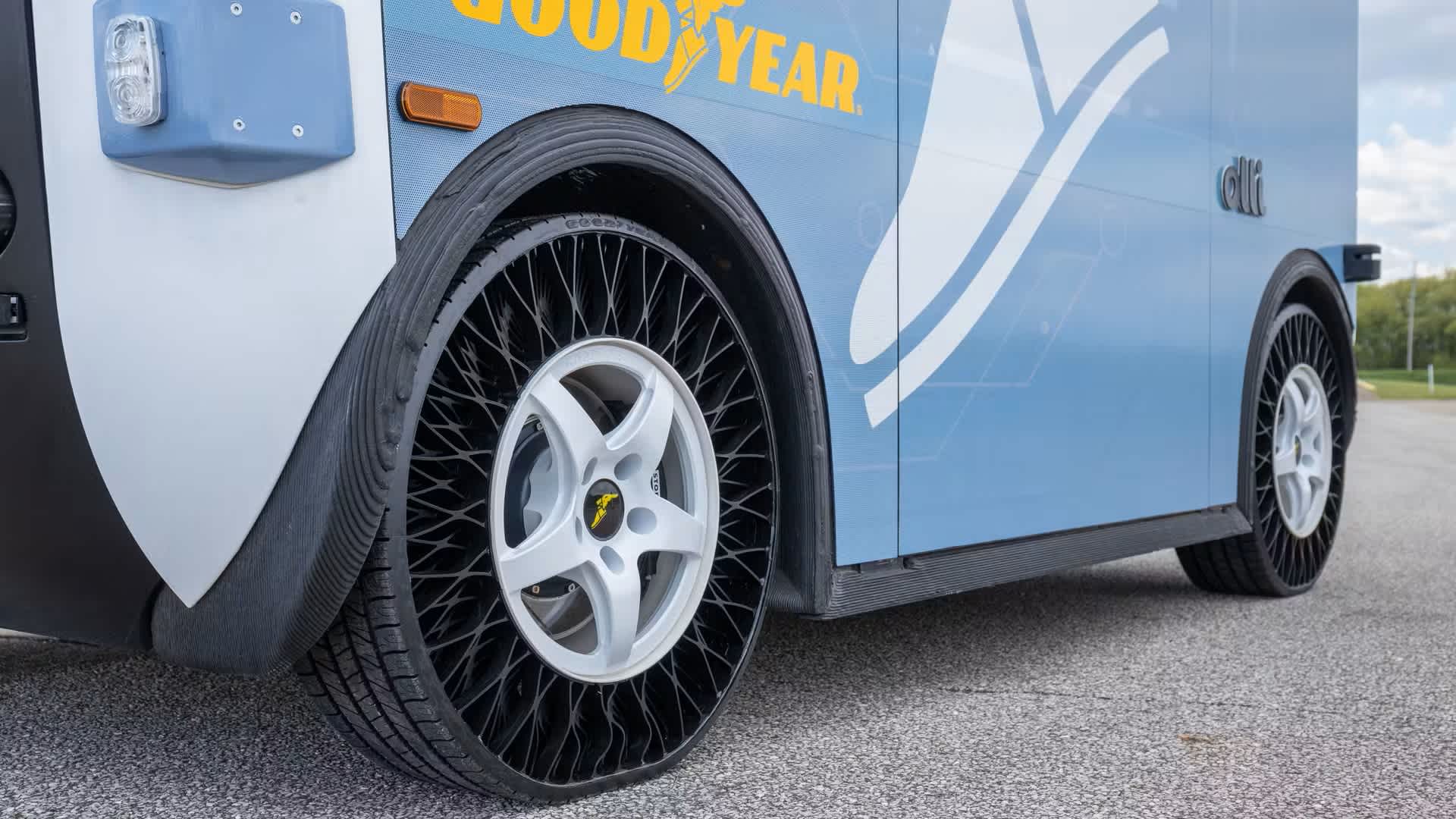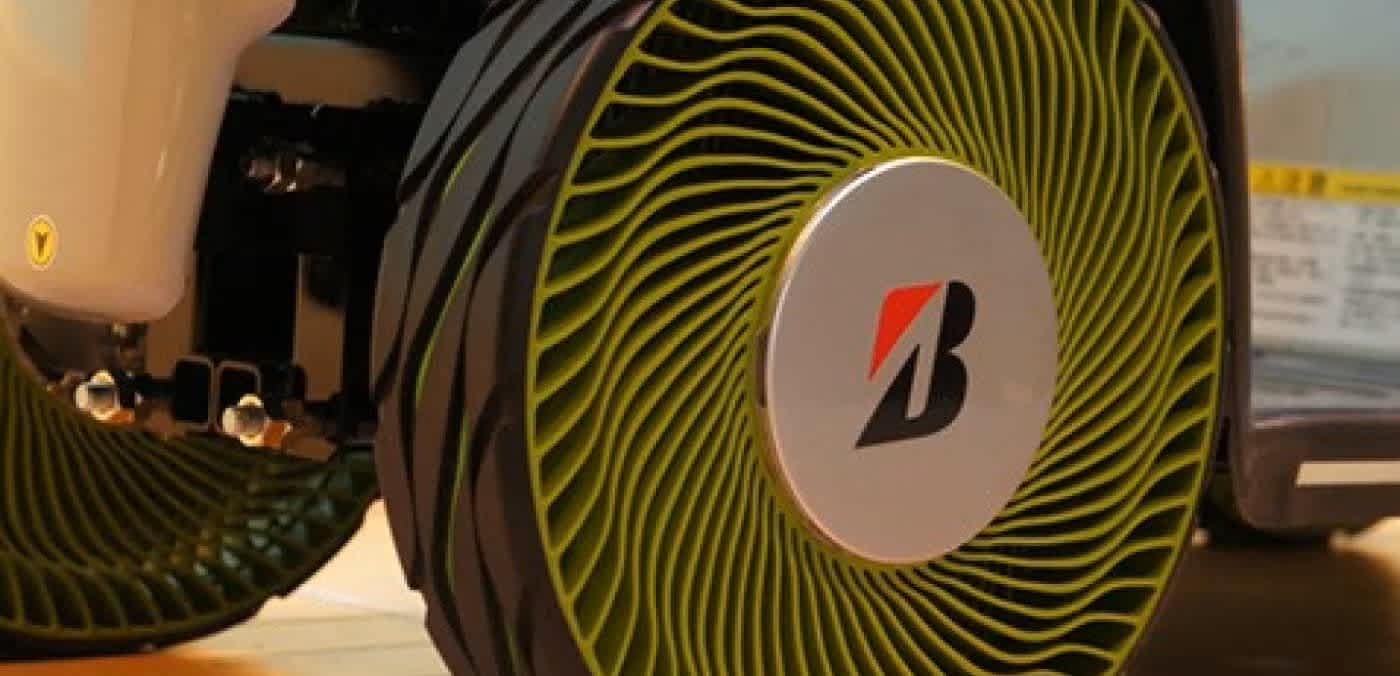Tire news & information
Best price guarantee
Free tire replacement coverage
24/7 roadside assistance
Easy returns

Imagine a world where flat tires are a thing of the past—a distant memory of roadside delays and unexpected expenses. Recent advancements in tire technology have brought us closer to this reality, with the development of airless tires that promise to revolutionize the automotive industry.
These innovative tires, designed to eliminate the need for air pressure, offer a host of benefits for drivers seeking a safer, more convenient, and eco-friendly alternative to traditional tires. As major tire manufacturers continue to refine and improve upon this technology, the future of driving looks brighter than ever.
In this article, we'll explore the world of airless tires, delving into their unique design, potential advantages, and the challenges that must be overcome before they become a mainstream option for passenger vehicles. Join us as we take a closer look at this exciting development in tire technology and what it could mean for the future of transportation.
What Are Airless Tires?
Airless tires, also known as non-pneumatic tires (NPTs), are a groundbreaking alternative to traditional air-filled tires. Unlike conventional tires that rely on compressed air to support the weight of the vehicle, airless tires feature a unique structure that eliminates the need for air pressure.
At the heart of an airless tire's design is a complex network of spokes or a honeycomb-like structure that provides the necessary support and stability. This intricate arrangement of materials, often made from durable polymers or advanced composites, is engineered to absorb shocks and distribute the vehicle's weight evenly across the tire's surface.
By eliminating the air cavity found in traditional tires, airless tires offer a host of advantages:
-
Puncture-proof performance: The solid structure of airless tires renders them impervious to punctures, ensuring that sharp objects on the road won't leave you stranded with a flat.
-
Reduced maintenance: With no need to monitor or adjust air pressure, airless tires simplify tire maintenance, saving time and effort for vehicle owners.
-
Enhanced safety: The risk of sudden blowouts or rapid air loss is eliminated, providing a safer driving experience and peace of mind, especially at high speeds or in challenging road conditions.
As tire manufacturers continue to refine and optimize the design of airless tires, the potential for this technology to revolutionize the automotive industry grows increasingly apparent. From passenger cars to commercial vehicles, the applications for airless tires are vast and promising, paving the way for a future where flat tires are nothing more than a distant memory.
Benefits of Airless Tires

Airless tires revolutionize vehicle reliability by offering a consistent driving experience without the setbacks of traditional tires. They maintain optimal traction and stability even when traversing debris-strewn roads, which reduces the anxiety associated with tire damage. This unwavering performance on diverse surfaces makes airless tires an excellent choice for those who regularly encounter unpredictable environments.
In addition to enhancing vehicle performance, airless tires offer practical advantages. By eliminating the need for a spare, they allow for more efficient use of trunk space—ideal for trips where cargo capacity is at a premium. The reduction in overall vehicle weight further contributes to lower fuel consumption, underscoring the economic benefits of adopting airless technology.
Environmentally conscious drivers will appreciate the sustainable design of airless tires. Their robust construction minimizes the frequency of replacements, significantly cutting down on waste. This aligns with global efforts to reduce landfill contributions and preserve natural resources. As innovation continues, airless tires epitomize a harmonious blend of durability and eco-friendliness.
Challenges Facing Airless Tire Technology
Despite their promising benefits, airless tires confront several hurdles that must be addressed to achieve widespread adoption. One key concern involves their ability to handle thermal dynamics. Traditional tires, with their air-filled design, excel at dissipating the heat generated during operation. However, the solid structure of airless tires can trap heat, raising the risk of overheating and potential damage to the tire's materials over time.
Another consideration is the impact of airless tires on fuel economy. The broader contact area inherent in their design results in greater rolling resistance, which can lead to increased fuel consumption. Although these tires offer the advantage of puncture resistance, the trade-off in energy efficiency might affect overall cost savings, as drivers could face higher fuel expenses.
Comfort remains a critical area for improvement with airless tires. Their rigid build, while enhancing durability, might not cushion road irregularities as effectively as conventional tires like all-season tires or highway-terrain tires. This can lead to a less forgiving ride, where vibrations and impacts are more directly felt by passengers. As development continues, manufacturers must strive to strike a balance between robustness and ride quality to satisfy consumer expectations.
The initial cost of airless tires poses a significant challenge to their market entry. Being a cutting-edge innovation, they entail higher manufacturing costs due to specialized materials and production techniques. Though prices may become more competitive as production scales and technology evolves, the upfront expense may initially deter potential buyers. Overcoming these challenges is essential for airless tires to gain traction in the automotive industry.
Current Applications of Airless Tires
Airless tires have carved out a space in industries where reliability is crucial. These tires excel in applications such as lawn equipment and golf carts, where their ability to resist punctures ensures uninterrupted operation. This durability proves invaluable in settings that require consistent performance on diverse terrains.
The cycling industry also benefits from airless tires, offering cyclists a maintenance-free experience with guaranteed performance on rugged paths. Riders appreciate the consistency and dependability that these tires bring, enhancing their journeys without the worry of flats. In the automotive sector, leading tire manufacturers continue to innovate with airless technology. Goodyear's tests on autonomous shuttles and electric vehicles like the Tesla Model 3 signal a bold step toward integrating airless tires into future transportation solutions, where efficiency and reliability are paramount.
The Future of Airless Tires in the Automotive Industry

The automotive landscape is poised for a transformation as leading tire manufacturers work diligently to resolve the remaining challenges of airless tire technology. Companies are channeling their expertise into improving the materials and thermal management systems, ensuring these tires deliver a smoother ride. By focusing on these innovations, airless tires are becoming increasingly viable for mainstream adoption. Notably, Goodyear aims for a market release around 2030, marking significant milestones in this evolving sector.
Achieving widespread adoption hinges on balancing performance with affordability, making airless tires an appealing alternative to conventional options. As manufacturing processes become more refined and cost-effective, the financial accessibility of airless tires is anticipated to improve. This shift could position airless tires as a mainstream choice, offering drivers a reliable and cost-efficient solution that matches the performance of traditional tires. Their potential to reduce maintenance expenses further enhances their attractiveness to cost-conscious consumers.
Beyond immediate applications, airless tires represent a forward-thinking step toward sustainability and innovation in transportation. As they integrate into electric and autonomous vehicle platforms, their contribution to reducing environmental impact becomes more pronounced. By enhancing vehicle efficiency and minimizing waste, airless tires support global sustainability initiatives. This positions them as pivotal to the future of the automotive industry, where safety, convenience, and eco-friendly practices align to redefine the driving experience.
As the automotive industry continues to evolve, airless tires are poised to play a significant role in shaping the future of transportation. We at SimpleTire are committed to staying at the forefront of this exciting development, ensuring that you have access to the latest tire technologies and the best deals available. Shop for tires online with SimpleTire today and experience the convenience, affordability, and peace of mind that comes with purchasing from a trusted industry leader.
Ready to find the perfect tires?
Search By